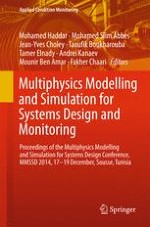This book reports on the state of the art in the field of multiphysics systems. It consists of accurately reviewed contributions to the MMSSD’2014 conference, which was held from December 17 to 19, 2004 in Hammamet, Tunisia. The different chapters, covering new theories, methods and a number of case studies, provide readers with an up-to-date picture of multiphysics modeling and simulation. They highlight the role played by high-performance computing and newly available software in promoting the study of multiphysics coupling effects, and show how these technologies can be practically implemented to bring about significant improvements in the field of design, control and monitoring of machines. In addition to providing a detailed description of the methods and their applications, the book also identifies new research issues, challenges and opportunities, thus providing researchers and practitioners with both technical information to support their daily work and a new source of inspiration for their future research.
